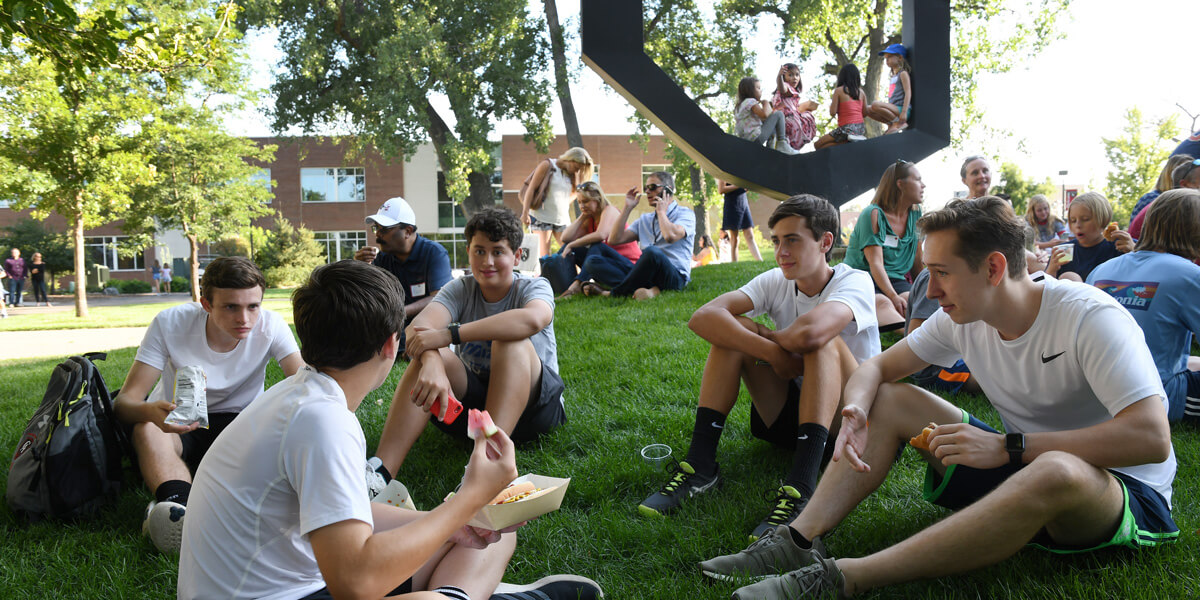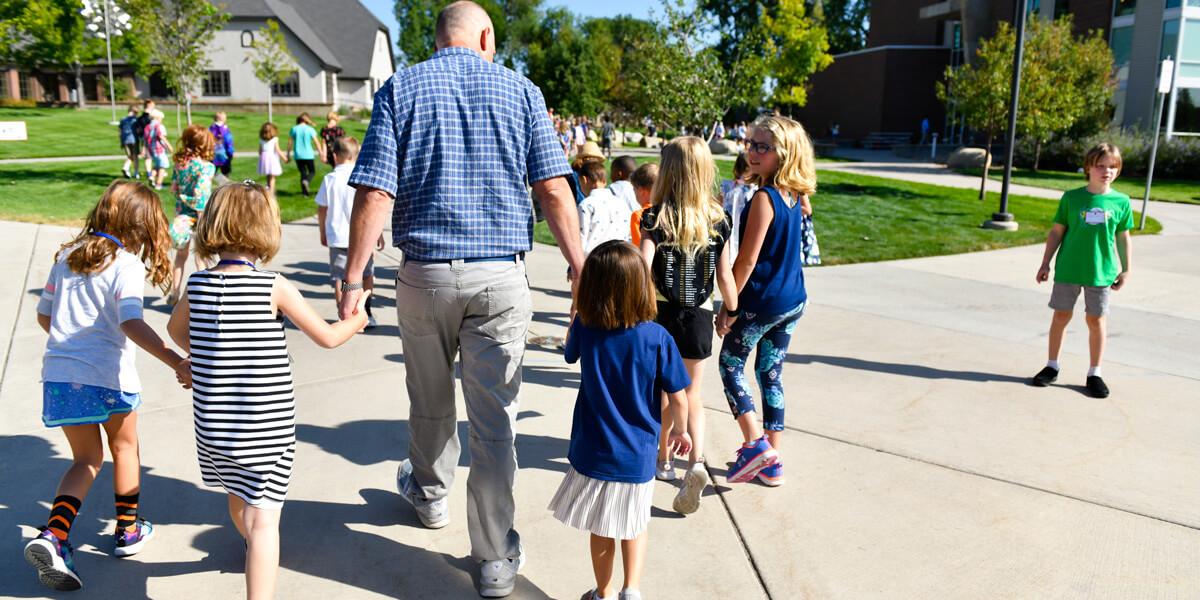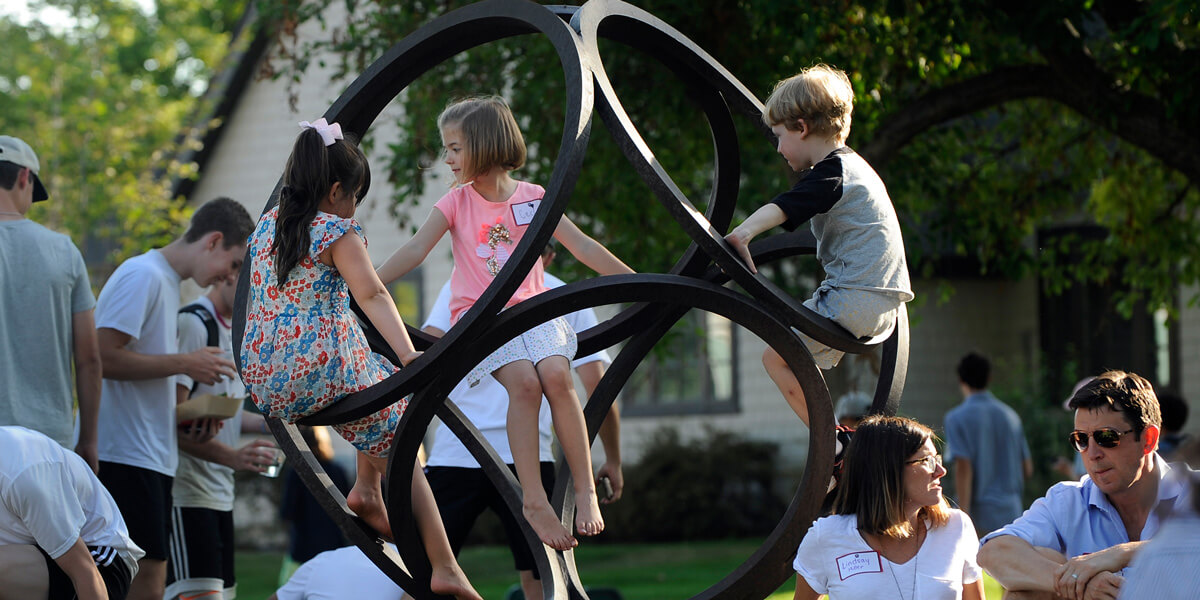I truly love the start of the school year at Colorado Academy. There is an energy and excitement that is palpable. It begins with pre-season sports camps, as students return to our athletic fields and facilities. Then, our new teachers arrive for orientation during which we try to help immerse a talented group of educators in our practices and school culture. Next, our full faculty and staff gather for trainings on safety and security, as well as pedagogical tactics and strategies (our own version of the “pre-season”).
Then, we host a phenomenal evening with our new parents who meet their principals and other parents. The energy builds to our annual All-School Picnic, during which our community gathers on the eve of the opening day. I love seeing the faces of teachers, students, and families as they reconnect with friends and peers. We know there is something special about this community, and our picnic affirms that feeling.

How do we preserve and protect?
As I go into the school year, the health and safety of our community and culture is foremost on my mind. How do we preserve and protect what we have here at CA? (I write we because it is all of our responsibility.) I look out at what is happening in our nation and world, and I find myself increasingly concerned about the division and violence our students see. I worry about how this will affect them.
At the same time, I strongly believe that the learning community at Colorado Academy can be a countercultural force that can support young people and help them not only be resilient, but also realize their full potential. The New York Times writer David Brooks’ new book, The Second Mountain: The Quest for a Moral Life, has a number of reflections on the nature and importance of community. He writes, “A healthy community is a thick system of relationships. It is irregular, dynamic, organic, and personal. Neighbors show up to help out when your workload is heavy, and you show up when theirs is.”
He describes how “In an engaged community, people are up in one another’s business, know each other’s secrets, walk with each other in times of grief, and celebrate together in times of joy. … people help raise one another’s kids. In these kinds of communities, which were typical in all of human history until the last sixty years or so, people extended to neighbors the sorts of devotion that today we extend only to family. Neighbors needed one another to flourish and survive, to share in hard times.”
I love his description of a healthy community as one in which “people are up in one another’s business.” This can be an apt description of a healthy school. If we as educators truly care about the health and well-being of our students, we don’t look the other way if there is a problem. We don’t walk away if a child is struggling or reaching out for help. We stand by a family who might be experiencing loss or tragedy. We engage in challenging conversations to help our students make sense of our complex world.

A voluntary community
I think it important to remind ourselves that we are voluntary community: we have each chosen to be here. Part of that choice is recognition that we will avail ourselves to difficult conversations to ensure that all of our students will realize self-discovery and experience human dignity.
I hope that all members of this community can pull together and remember our human connection. We all are here for one purpose: to help students learn. We want them to be physically and emotionally safe, but to do our jobs fully, we must also push our children to step out of their comfort zones.
I appreciate the skill of our teachers to work in age-appropriate ways to help our students become better citizens. Whether you are a parent, student, faculty member or alumni, there are some simple things we can all do to help our community be the best it can be.
Community norms
Each summer, I help teach a program for aspiring school leaders with the National Association of Independent Schools. This year, our sessions were bound by a set of community norms to guide our work. Norms are defined as those values, beliefs, attitudes, and behaviors shared by most people in a group. I share them here (with some of my own commentary), because I think they are instructive, and I hope we can apply them to our own learning community here at CA.
- Accept disagreement as a catalyst for learning
MD: We learn by solving problems and working through challenges.
- Be comfortable with silence
MD: We are speaking over one another in this nation. Let’s do more to be reflective.
- Suspend judgement
MD: This is so critical. Social media culture has made it to easy for people to criticize and condemn fellow human beings. We can do better, and we need to model better for our children.
- Act like a professional
MD: We can all be our best selves—whether we are student, parent, or faculty member. It’s not easy and takes energy, but our community benefits when we bring our best.
- Assume positive intent
MD: Think of how this simple practice could change your interactions with the people in your life.
- Be fully present
MD: If we get distracted by ruminating about things we can’t control, we miss the great things before us.
- Speak from the “I” perspective
MD: We each have our own truths, and no one can truly speak for another individual or group. Being mindful of our experience and how that affects our perception of reality can help us form more positive human connections.
- Value multiple perspectives
MD: At CA, we have so many interesting and dynamic members of our community. No person is the same, and we value all kinds of diversity. This includes intellectual diversity. Let’s practice intellectual humility, to listen to one another and learn from each other.
- Take risks, make mistakes
MD: This should apply to all of us—not just our kids. I am not talking about climbing mountains; I think this can come down to taking risks in our human relationships by reaching out to others and being authentic and vulnerable. We are all going to make mistakes, and if we are willing to accept that in ourselves, we will do better accepting that in others.
I wish each of you a wonderful school year. Know that my office door is open and I want to hear from you.
